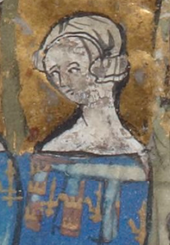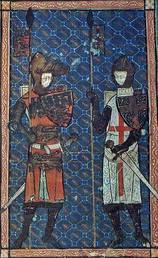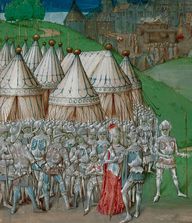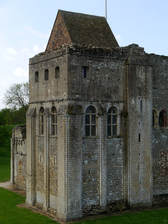On Edmund and Blanche's marriage, Edmund became step-father to Blanche's one-year-old daughter Joan, whose daughter Isabella would become the wife of Edward II and lover of Roger Mortimer. Their marriage, it is said, was arranged but was thought to have been a happy one and resulted in three children, Thomas of Lancaster - executed on the order of the aforementioned Edward II. Henry, nicknamed Wryneck due to a condition we know now of as Torticollis, where the muscles of the neck cause the head to twist to one side, and John, who died in France in 1317.
The couples twenty-year marriage ended with Edmund's death in 1296 during the siege of Bordeaux and Blanche died in Paris in 1302.






 RSS Feed
RSS Feed
